
Exercise Report : Operation Castle Forge 2021 - Larissa, Greece
Operation Castle Forge 2021 – Larissa, Greece
In October 2021, USAF 336th Fighter Squadron F-15E Stike Eagles deployed to Larissa Air Base in Greece for Operation Castle Forge.
Report and photos by George Karavantos.
336th FS Rocketeers in Europe
Since October 6, 2021, F-15E Strike Eagles from the 336th Fighter Squadron of the 4th Fighter Wing at Seymour Johnson Air Force Base, North Carolina, have been thundering over the Balkans region alongside allies from the Bulgarian, Greek, and Romanian air forces. This multinational operation, called Castle Forge, is all about agile execution and the ability of NATO allies to generate air power anytime, anywhere.
Fifteen F-15E Strike Eagle aircraft from the 336th Fighter Squadron at Seymour Johnson AFB, North Carolina, recently completed intensive forward dispersal activities across Europe as part of Operation Castle Forge. The Strike Eagles arrived in Europe on October 6 and conducted training alongside the Hellenic Air Force at Larissa Air Base, Greece, from October 11 to 17.
Subsets of the unit forward deployed to Graf Ignatievo AB, Bulgaria, and Borcea AB, Romania, from October 18 to 25 to exercise Agile Combat Employment and conducted vital training alongside the Bulgarian and Romanian air forces. The F-15Es then returned to Larissa before launching the second phase.
From October 30 to November 6, F-15E elements again forward deployed from Larissa to Graf Ignatievo AB and Borcea AB, simulating airfield opening procedures and Agile Combat Employment. Along with combined training between the NATO air forces, allied integration expanded to include assets from the U.S. Navy’s Sixth Fleet.
The Strike Eagles supported protected entries of the USS Porter and USS Mount Whitney into the Black Sea, as both vessels continue routine patrols in the region. For the Mount Whitney mission, the U.S. fighters teamed with a Greek EMB-145 and a Turkish E-7T, which provided air surveillance and command and control. This convergence of allied integration demonstrated air-maritime operations as a cornerstone of NATO multi-domain operations, as well as the alliance’s ability to form a responsive joint force.
Additionally, the Strike Eagles successfully joined with the Romanian Air Force to integrate with Royal Canadian Air Force CF-188 Hornet fighters presently supporting NATO’s enhanced Air Policing mission under Operation Reassurance from Mihail Kogălniceanu AB, Romania.
Castle Forge's objectives:
Castle Forge is the premier Agile Combat Employment (ACE) exercise of the U.S. Air Forces Europe-Air Forces in Africa that brings NATO allies and components together to demonstrate a credible and reassuring presence in the Black Sea region. It was designed to exercise the agility and rapid movement of air power to forward locations, raising the U.S. commitment to NATO allies in the Black Sea region while demonstrating the alliance’s combined ability to respond with a flexible, reassuring presence. Agile Combat Employment or ACE ensures forces are ready for potential threats and contingencies by allowing them to quickly disperse and continue to deliver air power from locations with varying levels of capacity and support.
“ACE, is the ability to quickly reposition to austere airfields and quickly generating aircraft and missions, so that we can keep potential adversaries on their toes,” said Lt. Col. Harry Starnes, Castle Forge project officer for the 4th Fighter Wing and continued: “The reason it is important to train with our allies is that we are going to count on them and they are going to count on us to make this happen if we are ever actually called to fight in a conflict.”
On October 28, 2021, Gen. Jeff Harrigian, commander of NATO Allied Air Command and U.S. Air Forces Europe – Air Forces Africa, made a special visit to Larissa Air Base in Greece. "Castle Forge continues to demonstrate the value that working alongside allies brings to the table, not only for air power but across the entire spectrum of military operations,” said Gen. Harrigian and continued: “We are proving that our force is more flexible, more cohesive and more capable when we train together.”
The Rocketeers:
The 336th FS "Rocketeers" is one of the most legendary and distinguished squadrons of the U.S. Air Force. It was constituted on August 22, 1942, as an incorporation of the Royal Air Force 133 Squadron into the United States Army Air Forces' VIII Fighter Command. RAF 133 Squadron was one of three RAF Eagle Squadrons composed of American volunteer pilots who enlisted in the RAF and fought in World War II prior to the United States’ entry into the war.
The "Rocketeers" fly the McDonnell-Douglas (now Boeing) F-15E Strike Eagle. It was the first operational F-15E squadron in the Air Force. Its aircraft are identified by the "SJ" tail code and yellow fin flash.
In the Persian Gulf War, the 4th TFW was one of the first units tasked to react to Iraq's invasion of Kuwait in August 1990. The 335th and 336th Tactical Fighter Squadrons and support personnel deployed to Saudi Arabia, beginning in August 1990. The combat record of the 4th TFW in Saudi Arabia was exceptional, with the 336th TFS flying 1,088 combat missions during Operation Desert Storm. The unit dropped more than six-million pounds of bombs on Scud missile sites, bridges, and airfields. Most of the missions were flown at night. To date, the 336th FS has destroyed 459 enemy aircraft including the 4th Fighter Wing's sole MiG kill in Vietnam.
Report and photos by George Karavantos ( view portfolio )
Last Modified: 3 January 2022
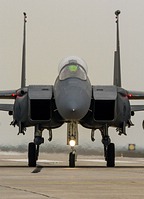




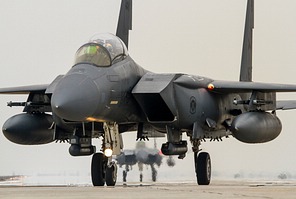


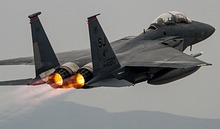





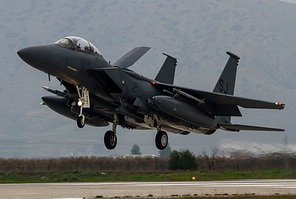








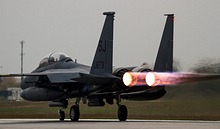
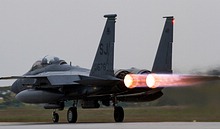



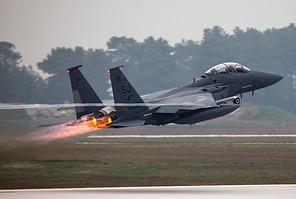






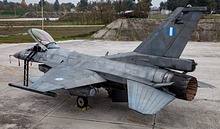
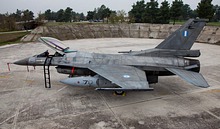
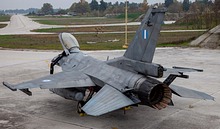
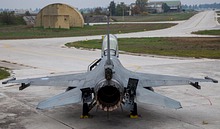
 Back to Index
Back to Index